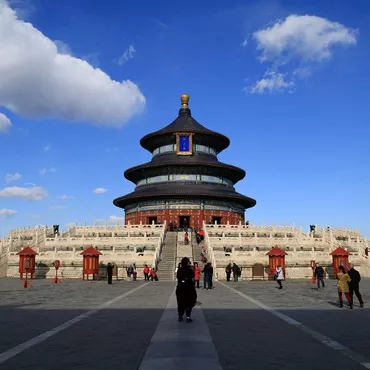Shijia Hutong Museum
The Shijia Hutong Museum, nestled in the heart of Beijing, offers a charming glimpse into the past, spanning just over 1000 square meters with 8 exhibition halls and a versatile function room. It meticulously recreates the essence of old Beijing alleyway life with a diverse array of exhibits. From 1920s and '30s marriage certificates to traditional bamboo baskets once commonplace in households, and even relics like bus tickets now faded from daily life, the museum paints a vivid picture. Step into meticulously furnished rooms from the '50s and '60s, where simple wooden furniture and a prominent semiconductor radio evoke an era. Progressing to the '70s and '80s, witness the emergence of modular furniture, echoing the era's trendsetting "sofa beds and black-and-white TVs at the center" style.

Central to the historical exhibition is a detailed model of Shijia Hutong, stretching 7-8 meters long and 2-3 meters wide, showcasing 130 courtyards steeped in history, once home to numerous luminaries and stories aplenty.

The museum's centerpiece, courtyard 24 of Shijia Hutong, once hosted gatherings of artists and intellectuals, famously led by Ling Shuhua, one of the Three Wonders of the Republic of China. In the social whirlwind of her time, Ling Shuhua entertained luminaries like Qi Baishi and even Rabindranath Tagore.
Beyond its celebrity connections, Shijia Hutong nurtured Beijing People's Art Theatre (known as "Old Theater") from its roots as the North China People's Art Troupe in 1950. June 12, 1952, marked the official establishment of Beijing People's Art Theatre in courtyard 20, launching icons like Jiao Jiuyin, Ouyang Shanzun, and Zhao Qiyang into the spotlight.
The museum not only offers a glimpse into the past through 130 meticulously recreated courtyards but also immerses visitors in the sounds of old Beijing with over 70 distinct "hutong sounds" like "startling the ladies" and "tiger-climbing sticks." In the Time Memory Hall, a special room equipped with professional audio equipment allows visitors to experience these sounds from the '50s, '60s, and '70s at the touch of a screen. Imagine the hustle and bustle of old Beijing brought to life through the echo of voices and the clink of ancient copper and iron bells.
As a vital element of ancient Chinese urban space, the origin of hutongs dates back to the Western Zhou period. Stemming from the Mongolian word for "well" or the Han Dynasty pronunciation of "lane," hutongs have been integral to northern Chinese culture since the Liao and Jin dynasties. By the Yuan Dynasty, Shijia Hutong had already made its mark, residing within the bounds of Huanghua Fang during the early Ming Dynasty's relocation of the Yuan capital.

Today, remnants of the Ming Dynasty's Hongzhi era Shun Yao's glazed bricks still grace the western walls of the eastern gateway to the hutong. While the exact reason behind the hutong's name remains elusive, it is widely believed that a prominent "Shijia household" of the Ming Dynasty resided here.
>Shijia Hutong Museum stands as Beijing's premier hutong museum, offering a captivating journey through time and culture, inviting visitors to savor the essence of old Beijing and explore the echoes of a bygone era.
Opening Hours: Tuesday to Sunday, 9:00 AM to 5:00 PM
Address: 24 Shijia Hutong, Dongcheng District, Beijing
















